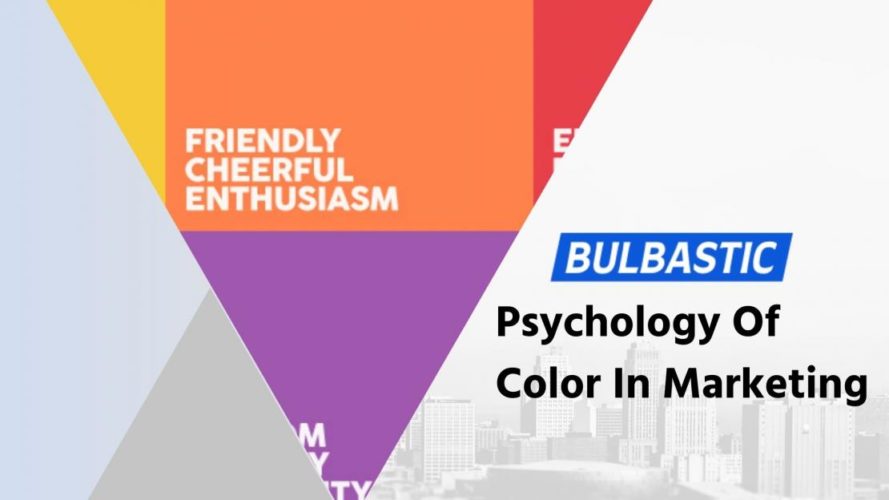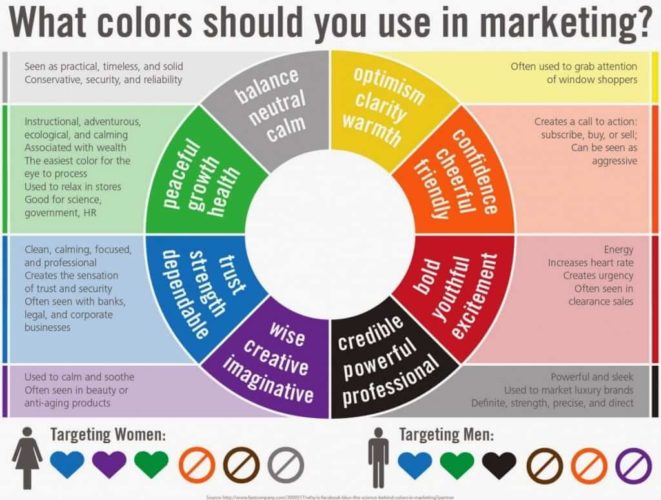
The Significance Of Color In Design For Brands
Shoppers are highly responsive to colors, but mood-based color choices are not decisive. Since the right color for a brand can bring popularity and value to it, it is important to know which colors will work for a particular brand and its audience.
If you are connected with marketing, then you probably know that color and the psychology of color are of great importance, as they motivate the consumer to take action and can even convince him of something. Thus, color is used by marketers to evoke emotion, and understanding the psychology of color will help you improve your brand.
Psychology Of Color Is Not Universal
Of course, it is important to understand that the consumer’s reaction to a particular color is in any case individual. Even if some research says that a certain color makes a person happy or unhappy, it is worth understanding that color will have different effects depending on the context, location, and even culture.
For example, did you know that in Western culture, colors like yellow and red are used as warning signs? On the other hand, however, when used in the context of the sun, or the McDonald’s yellow arches, for example, it can evoke a sense of joy. A similar example can be found with respect to blue, as in Western culture, blue sky means joy. However, the blue sky can already be associated with melancholy and sadness. Moreover, in Eastern cultures, blue also often has even a religious meaning. If we speak with Judaism, then blue is generally a shade of divinity, since it is the color of Krishna (the most revered God).
Thus, when you have seen the nuances of a particular color, it is important to view the theory and psychology of color as a guide to be used in that particular context.
Gender And Psychology Of Color
Surely you understand that color preferences also differ between genders. A typical stereotypical concept is that blue is suitable for boys and pink is for girls. Of course, all of this is nothing more than a clever marketing that took place before World War II.
You’d be surprised to know that in June 1918, an Earnshaw’s Infants’ Department article said pink was a more emphatic and vibrant color, more suitable for boys. Conversely, blue, which is more delicate and graceful, is well suited for girls. Thus, it was only in the 70s and 80s that everything changed, and pink became the color of girls, and blue became the color of boys. Also, the changes came as marketers created gender-based color schemes. Thus, if a woman is expecting a girl, she begins to buy pink dresses and wallpapers in stores, and when expecting a boy, preference is given to blue cars and pants.
Thus, pink and blue is a unique marketing ploy that has given rise to a large number of gender stereotypes. What’s more, studies have also found that men prefer bolder colors, while women prefer softer colors.
Some People Make A Purchase Based On Color
Some studies suggest that people make a person or purchase decision in the first 90 seconds. Moreover, you will be surprised to know that about 60-90% of estimates are based on color alone. Just imagine, 90%! Since this is a huge number, choosing the right color for a particular product can give marketers a huge advantage over the competition.
Research also shows that color can also be used by marketers to decrease or increase appetite, liking, mood, and more.
Psychology Of Color In Marketing
You should be aware that although customers may react strongly to a particular color, the choice of color based on mood is not decisive. Some studies have argued that having the right color for a brand name can bring almost immediate value to that brand. Thus, color matching can determine consumer behavior. In some cases, color reflects the functionality of a product, in others, its personality.
Thus, many studies suggest that the appropriateness of color matters more than the choice of color based on psychological impact. Below you can explore an image to help you understand which colors you should use in your marketing and which ones will work best for your brand and audience.
